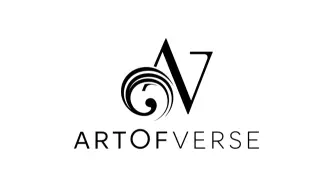The movie industry has slowly been taken through a radical overhaul, something that is squarely attributable to the breakthroughs in 3D animation. Originally used for cartoon films, 3D animation is widely used nowadays for films of all genres with references to science fiction and fantasy, actions, and even drama. Modern 3D animation services are a breakthrough in terms of ingenuity, solidity, and narrative potential that can offer a director’s imagination to moviegoers. Now, let us explore several key trends that capture today’s demand for 3D animated services for movies.
1. Hyper-Realistic Animation
This is probably one of the most remarkable tendencies identified in the sphere of 3D animation movies in the current year. Due to technology in render software, motion capturing tools, and elements improved with artificial intelligence, animators are at liberty to develop environments, characters, and effects that are so real, that it may be difficult to differentiate them from live captured scenes.
Hyper-realistic animation is particularly prominent in films that blend live-action and CGI, such as Avatar: The Way of Water and The Lion King (2019). Realism in physics and looking, textures, and lighting gives filmmakers the capability of pulling the audience into a reality that is in their story.
This trend is also shifting the way directors tell the story, the cinematic character faces and slight motion in digital characters convey more realism, and therefore, the audience can easily relate to.
2. Virtual Production
Virtual production is 3D animation linked with live and LED wall technology that revolutionize the manner films are produced. Today software like the Unreal Engine or Unity allow Directors and actors to set up complex 3D environments which can be filmed live.
It was notably applied in Disney’s The Mandalorian series where actual set of large alien scenes were used without screen replacement by projecting on LED walls. Virtual production means that many effects are addressed on set, which makes post-production shorter, and it improves the cooperation of directors, actors, and animators.
When the 3D animation is used in the production phase, the directors can have more consistent visuals and can also reduce costs being incurred within the whole process.
3. Artificial Intelligence And Animation
Currently, with the help of AI, many routine works of 3D animation like rigging, texturing, and rendering are accomplished. Thus, references can be analyzed with a help of tools powered by Machine Learning algorithms to make simulations as close to reality as possible and free animators from hours of work.
For instance, function for AI facial animation for animating various characters’ lips increases the viscosity for speech as a model. Likewise, AI is being applied in realistic crowd simulation, weather and fluid dynamics, all important in large scale productions.
AI is expected to grow further in the future and this can open the doors for many small studios and independent movie makers to level up the great large production companies.
4. Cross-Platform Integration
At present, the need for 2D animation services is highly oriented to compatibility with different media platforms. Considering the transmedia approach as the new trend in filmmaking, directors and screenwriters purposefully work on the expansion of their narrative FX across different media: video games, VR, and social networks.
For instance, an anchored movie series can use new technology of 3D animation to produce VR spin-offs or video games. The assets created for the film can easily be repurposed for other formats so the end aesthetics and character design remain uniform.
This trend enables filmmakers to create a large and diverse world in addition to the theater, it also serves as a way of constantly reminding the audience that they are the fans of a certain series thus enhancing brand loyalty and extra form of income. This technology was also used in generating characters such as Gollum in the Lord of the Rings movies and Neytiri from the Avatar movies.
5. Manga Animation for Distinctive Narration
However, hyper-realism prevails in some genres and stylized 3D animation is becoming increasingly popular as a rather separate and visually individualized direction. Films like Spider-Man: Spider-Man: Into the Spider-Verse and Puss in Boots: The Last Wish demonstrate how stylized designs can generate settings based on comic books with additional 3D approaches.
This trend focuses on creativity and permits the filmmakers to develop grand themes and high contrast colors and fancy characters and untraditional approaches to storytelling. Stylized animation was particularly suitable in the show because the most imaginative visuals can be nurtured by fantasy and science fiction genres.
Conclusion
3D animation is considered a cutting-edge part of filmmaking, which forms how the stories are conveyed. This has made it now possible to shoot virtual productions, hyper-realistic visuals, AI-automated cinema, and AR/VR immersion in cinemas.
The adoption of such ideas allows, on the one hand, the formation of fascinating, emotionally engaging stories and, on the other – reduction of the time and expenses in shooting. This is an indication that the advancement in technology will result is an even greater development of role of 3D animation in filmmaking.

